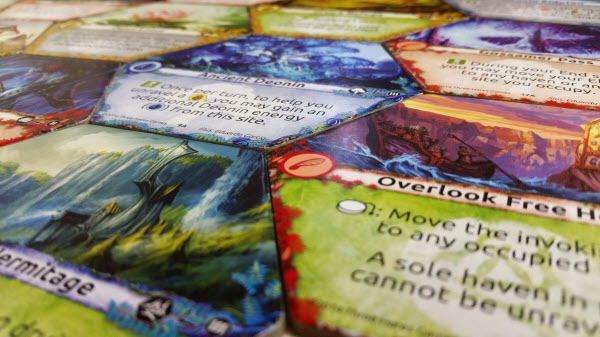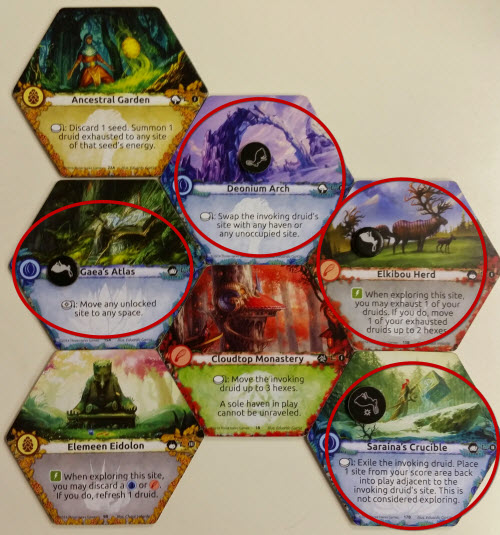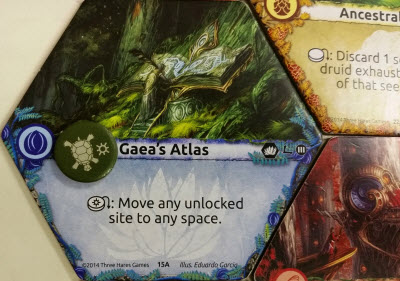Standing atop the small, you surveyed this particular landscape for the final time. On the surface, all was calm. Peaceful. Serene. There were no other creatures beyond a family of stubborn voles at the bottom of the eastern slope. To anyone but those with the gift to hear Terrene, the Worldvoice, this spot would have been an idyllic sanctuary for solitude and respite.
Yet beneath the surface, the land pulsed with an unruly energy, and, in time, it would change the world in a way your circle felt was undesirable for Lagoon’s inhabitants. As you began the spell to unmake this place, you again reminded yourself that the land, the energy, and the life would all be reshaped and reborn somewhere else. If you were lucky, you may even get to see it.
The Premise
The world of Lagoon was once a tranquil place, its magical energies coursing throughout the land. Everything was in balance. Until the rise of mankind. The emergence of humanity and its various ambitions fractured Lagoon’s magic into three energy types, each desiring dominance over the other two. Here, players command their own druidic circles as they seek to guide one of these energies into prominence – altering Lagoon’s fate forever.
The Rules
Lagoon is a semi-abstract action-taking tile placement game, and although gameplay can be complex, both the rules and setup are straightforward. The game consists of a stack of double-sided Site tiles and a pile of Seed tokens. Each face of a Site tile represents one of the game’s three energy factions: Elemeen (Yellow), Vowelon (Red), or Deonin (Blue). A handful of tiles are also designed as Havens – locations where players summon new units.
To begin, select 24 of the game’s 27 Site tiles and then pick three of them to form the starting area. Of these, one must be a Haven, and each must be a different faction. Players receives a Player Marker, four druid tokens, and one Eldrid (archdruid) token. Players begin with their Eldrid and another druid on the Haven.
The starting player is the one who most recently visited a forest.
Turns are broken down into four aptly-named steps: Begin, Refresh, Action, and End. The Begin and End steps only happen if that player has a druid on a tile with an effect for that step. The Refresh step lets the player refresh their Player Marker and up to three druids that were used on previous turns.
Almost all activity happens during the Action step. Any number of the player’s druids on the board may be flipped over to take an action. If a player has a druid on an Action tile, such as refreshing units or moving tiles around, it grants that ability to all of that player’s druids. However, some tile actions may only be activated by the Eldrid, while others only require a druid simply be on the tile or only trigger when the tile is added to the board.
Although available tile actions will change throughout the course of the game, druids always have access to four basic actions:
- Move: Move one space.
- Summon: Recruit a new druid to a Haven.
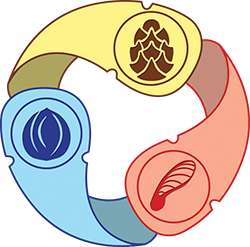 Explore: If the druid is adjacent to an empty tile space, draw a random tile, select a side, and place it next to that druid. The player gains a Seed token of that color and may move the druid into the new location. Exploring can only be done once per turn, indicated with the Player Marker.
Explore: If the druid is adjacent to an empty tile space, draw a random tile, select a side, and place it next to that druid. The player gains a Seed token of that color and may move the druid into the new location. Exploring can only be done once per turn, indicated with the Player Marker.- Unravel: If a player has druids on three spaces of the appropriate color and / or Seed tokens to discard, a druid may “unravel” the tile it is on, removing the tile from the board and adding it to their collection. The color requirements to unravel a tile behave in a Rock-Paper-Scissors formula.
Turns continue until all tiles have been Explored. At the end of that turn, the game ends. The faction with the most tiles on the board becomes the dominant energy source of Lagoon. Players gain 1 VP for each Seed token they have of that faction and 2 VP for each tile they have that does not match.
(For instance, if Red won, players would gain 2 VP for each Blue and / or Yellow tile and 1 VP for each Red Seed token.)
The player with the most VP wins, having been the best at guiding the land to its true destiny.
Everyone else will have to wait until the winds shift and the process begins anew…
Kindly Pass Me The Square Hexahedron
Odds are, the first thing you’ll notice with Lagoon: Land of Druids is its artwork. It’s evident that a lot of effort went into the otherworldly setting. Lagoon’s artwork helps craft a unique fantasy realm – something not easily accomplished – with each tile acting as a window into a specific section of its realm.
That said, while the depictions are great to look at, they only provide you with a cross-section of Lagoon. We’re only given snapshots of these places, but the game doesn’t go into detail about the locations or the world itself. The result is that Lagoon does a terrific job conveying the flavor of its world through its artwork, but although it hints at something greater, the theme stays fairly basic. This will be a disappointment to Immersionists.
The major area where Lagoon’s veneer chips is the game’s language. The complexity of Lagoon is not from the rules themselves, but from how you are able to strategically chain your actions together. However, the game’s wordy descriptions make the game seem denser than it is.This verbosity is true both for both the rule book and the game’s tiles, although it’s more of an issue on the tiles themselves. While few of the game’s tiles are confusing, many of them are much less concise than they could be. This can make it more difficult for players to easily scan the board as they plot their next move.
It isn’t simply the artwork that makes the game so visually appealing, though – the physical components of the game are impressive as well. Lagoon is a tile game, and it doesn’t skimp on quality. Each of the Site tiles, Seed tokens, and Player Markers are thick and durable, adding some solid heft to the game. This is somewhat ironic, since, you know, the whole point of the game is to make solid land disappear.
With that all said, it’s strange to say that the thin player reference cards, which, when compared to the rest of the game, almost feel out of place. But they are a minor detraction from an otherwise admirable package.
Lagoon Club
From the first rustle of the velvet tile bag, Lagoon is not your standard small-form strategy game. Lagoon actively defies placement into any one game genre, and it shows. Lagoon has elements of tile-placement games, but the tiles are mostly a means of getting access to new abilities. It possesses the spirit of an abstract game, but playthroughs are very asymmetrical and the board continually changes. It uses aspects of Worker Placement games, but you don’t run into the tension of action scarcity since tiles can be shared by anyone and all of your units share each other’s abilities. In a way, Lagoon is a world unto its own, not fully embodying any classical definition. This is part of what makes the game so intriguing.
However, stripped bare Lagoon is, in general terms, a tactical game. It’s game about making calculated strategic decisions about how to best utilize your conclave of druids. Yet it’s easier said than done.
For starters, the connected behavior of your druids is a little counter-intuitive. It’s ingrained into most people that when you use a unit to take an action, you have to use the unit on that specific spot. In Lagoon, the sharing of those tile abilities throughout all of your druids is central to playing the game effectively. Doing so opens the game up to an impressive (and potentially overwhelming) number of strategic possibilities. You are guaranteed to never play out the exact same game of Lagoon twice.
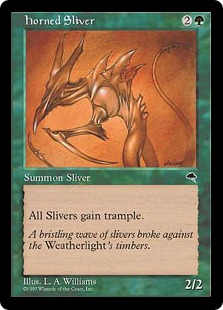
Basically, your druids are Slivers.
The order in which you use your druids to pull off different combinations usually matters, which says nothing of trying to ascertain if you are even able to pull those combos off at that moment. As a result, Lagoon requires a heavy amount of mental plotting and planning. Shockingly, the game is also incredibly prone to causing Analysis Paralysis even in players who aren’t necessarily prone to it.
For Tacticians and those who enjoy games with lots of mental tumblers, Lagoon should be appealing. Although it’s not always possible to plan more than a turn or so ahead, Lagoon still provides enough to focus on that moderate forecasting is enough to hold their attention.
However, it is very evident that not everyone should enter the land of Lagoon. For those who prefer more interactive or linear games, it’s best to stay here on Earth. Lagoon is the exact opposite of the kind of game that Socializers enjoy, and while Architects generally love games where exploration is a core concept, the landscape in this game is far too ephemeral for their tastes.
A Leaf On The Wind
For all of the game’s tactical maneuvering, Lagoon still has more than a splash of unpredictability when it comes to which energy faction will emerge victorious. The randomness stems from two principal areas.
The first is from the players themselves, as they are the largest determining factor on which tiles get added and removed from the board. Because every tile is double-sided, you get to pick which side you’d prefer to see on the board. By adding one color tile and removing another on your turn, it can drastically shift the odds of a player winning. Moreover, if more than one player focuses on the same energy faction, it becomes an increasingly uphill battle for anyone who had been working a different path. (This is most common in three player games.)
The second area is from the tile draws themselves. Even though you have two different colors to choose from, you still have to contend with a luck of the draw. Lagoon does a decent job at mitigating luck overall, but it’s still present. For instance, if you require red tiles to help your odds of winning, and three Explore actions in a row don’t net you any, the game can turn against you quickly.
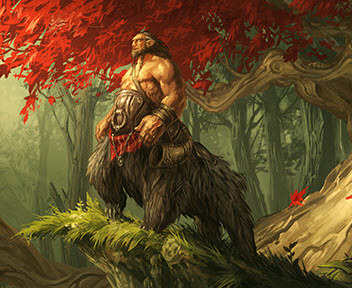 Of course, Lagoon’s mix of wide strategic options and unpredictability is what Daredevils yearn for. Lagoon undoubtedly rewards planning your turns, but you also have to be nimble in that planning, and this group loves doing both.
Of course, Lagoon’s mix of wide strategic options and unpredictability is what Daredevils yearn for. Lagoon undoubtedly rewards planning your turns, but you also have to be nimble in that planning, and this group loves doing both.
There is also not so much luck as to turn off Strikers. On the one hand, this group won’t enjoy that they can have victory snatched from them due to poor tile draws or collusion among other players. On the other hand, they certainly will like that Lagoon is a close race from the onset, and not only is disrupting your opponents possible, it’s often essential.
The Takeaway
At its heart Lagoon: Land of Druids is primarily a strategic affair, offering up a surprisingly cerebral challenge on the one hand and a penchant for inviting indecision on the other. Lagoon is a tactical puzzle to be solved, except that its pieces continually shift and change. With its durable components and resplendent artwork, each game provides an entirely different path to winning, and games are often tightly contested until the end. Although its locales may always be dangerously in flux, Lagoon: Land of Druids is one world worth exploring.
Lagoon: Land of Druids is a product of Three Hares Games.
Cardboard Republic Snapshot Scoring (Based on scale of 5):
Artwork: 4.5
Rules Clarity: 3.5
Replay Value: 4
Physical Quality: 4.5
Overall Score: 4
Photo Credits: Magic card by Wizards of the Coast.

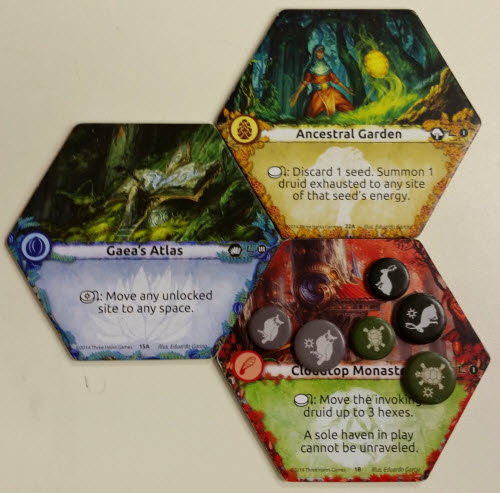
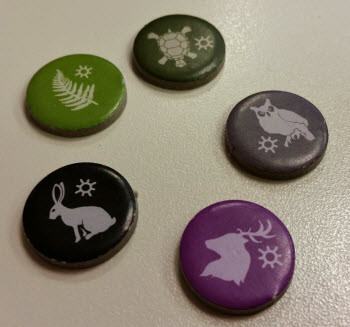
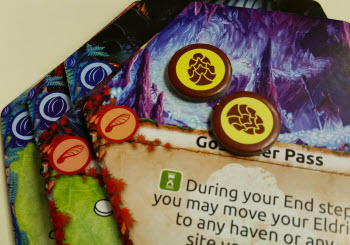
![Or, "This counts as 2 [Red] for Unraveling. Use only once each turn."](https://www.cardboardrepublic.com/wp-content/uploads/2014/10/lagoon-verbose.jpg)
